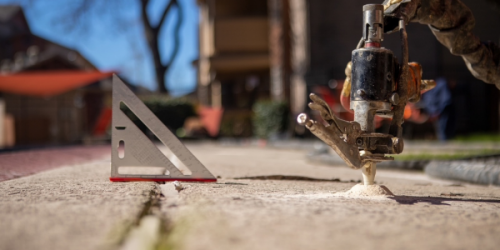Q&A Forums
CC w/ OC Post New Topic | Post Reply
| Author | Comments |
|---|---|
|
steven argus
Posted: Aug 27, 2010 01:48 PM
|
CC w/ OC
Hi Mason, Do you see any issues with CC and OC combined together in a wall or roof assembly? 1.5 inches of CC in the walls first and 2.5 inches of OC on top of that. R21 combined. Vapor barrier and no trimming of OC. Roof: 2 inches minimum (first) of CC and 5.5 inches of OC. Total R38. The closed cell foam we spray has a perm rating of .8 @ 1 inch. Located in zone 4-5. Thanks.
|
|
mason
Posted: Aug 27, 2010 10:09 PM
|
I think it is a good system. It would be a better combination than closed cell SPF and fiberglass or cellulose. |
|
Circle-D
Posted: Aug 27, 2010 10:42 PM
|
But Mason, doesn't this put the vapor barrier (closed cell) on the cold side of the wall if it is covered by other insulation. At least in the winter, anyway |
|
steven argus
Posted: Aug 27, 2010 11:29 PM
|
The vapor barrier issue is my biggest concern as well. I believe the OC will retard the vapor transmission enough that the vapor will not condense on the CC. We also need a "perfect storm" of inside humitity levels, inside temps and exterior temps and if moisture is controled, (HRV) that will eliminate part of the equation. |
|
mason
Posted: Aug 30, 2010 07:43 AM
|
Closed cell sprayfoam is not a vapor barrier. Everything is relative to the specific conditions of the building including, climate, type of materials and their relative permeance, use of the building, ventilation and degree of air tightness. Closed cell foam has perm rating of approximately 1-2 per inch of material. This would not make it a vapor barrier type of material. A vapor barrier type of material would have a perm rating less than 0.5 at thickness of 20 dry mils. 20 dry mils is the thickness of a typical business card. A vapor barrier is a type of membrane or coating that restricts vapor flow to extremely minimal amounts. It is typically used in cold storage facilities and in other situations where the vapor drive is always going in one direction. Types of vapor barrier vapor retarders include, asphaltic coating, butyl rubber, polyethylene plastic film, metal and other low perm rated materials. Some of these materials have perm rating less than 0.1 Closed cell foam however is considered a "smart" vapor retarder. If it is installed in sufficient thickness based on the climate, it will separate the inside and outside temperature and slow down (not stop) the vapor flow so a large amount of water vapor does not concentrate in one specific point of the assembly, thereby avoiding condensation. Water vapor traveling through ccSPF is always moving either in or out and will only accumulate if the vapor drive is always going in one direction and there is some vapor barrier type material to stop the vapor flow through the assembly (such as a metal wall or ceiling). It doesn't stop vapor flow it just slows it down so a large amount of water vapor does not accumulate in one spot within the assembly. In most climates in the US, a vapor drive goes different directions depending on the time of year and even the time of day. When you use a flash and batt system, the other insulation products such as fiberglass and cellulose have very high perm ratings, much higher than open cell foam which is around 8-15 perms per 3.5 inches. So water vapor goes through those materials as if it was not even there. In cold climates, you would require a thickner application of closed cell foam to make sure that interior surface of the foam is not cold enough to cause condensation. Normally this would be 2-3 inches in thickness in the northernmost climates. Another way to stop water vapor from condensing in cold climates is to add a vapor retarder element to the inside surface of the fiberglass, cellulose or open cell foam. This could be a coating or a membrane such as polyethylene plastic or asphaltic membrane (such as kraft faced fiberglass). But, this membrane would have to be installed perfectly without rips, tears or gaps. If there are holes in the vapor retarder, water vapor will go into the wall or ceiling assembly and not be able to dry out as quickly, so water vapor can accumulate within that assembly. That is why I so oftern err to the conservative approach and recommend installing a sufficient thickness of ccSPF in hybrid foam/fiberglass assemblies to prevent condensation even without an additional vapor retarder element over the fiberglass. In conclusion, open cell foam combined with closed cell foam would have a better chance of protecting against condensation than using fiberglass or cellulose with closed cell foam, because the open cell foam will stop air infiltration and reduce the vapor flow through the assembly better than fiberglass or cellulose. Also, don't forget to add ventilation appropriate to the building's air tightness. Sprayfoam should tighten up the building so make up air is usually required in new construction. In remodeling situations, the sprayfoam can still tighten up the building but, there would still be large areas of the building where natural air infiltration occurs so that additional make up air is usually not required. To be sure, blower door tests can be conducted before and after sprayfoam applications to determine where additional make up air is required. |
|
jimcoler
I have over 10 years of experience specifying and installing open and closed cell spray foam. I've sold my business but I'm still selling for the new owners and consulting on large and custom specific jobs. I've expanded my knowledge into t Posted: Sep 02, 2010 10:44 AM
|
SO, I'm confused!!! Previously, all of your comments have been that Closed cell foam can be a vapor barrier (<1 perm at a given thickness). You're now stating it's .5 perms?? Can you explain this discrepency? |
|
mason
Posted: Sep 03, 2010 03:15 PM
|
The SPF industry determined years ago that the term vapor barrier was inaccurate and followed the lead of building scientists such as Mark Bomberg to instead use the term vapor retarder. One material in one situation might be a vapor retarder and in another situation it would not. Such is the case of closed cell and open cell sprayfoam in different climate zones of the US For example, the buildings now have adopted Joe Lstiburek's 3 classes of vapor retarders with a table to determine when and where each can be used. While I dont't personally use the term vapor barrier, I understand that others still use it to describe vapor retarders of the lowest perm ratings. The vapor retarders with the absolute lowest perm ratings should be used in circumstances where water vapor travels only in one direction such as cold storage applications. Materials such as metal, butyl rubber, asphalt coatings, are still commonly referred to as vapor barriers because the perm ratings are so low. These are the materials that are used frequently in cold storage applications. Their perm ratings are well below 0.5 perms per 20 mils. Some are less than 0.01 perms. My early SPF applicator training was in cold storage applications. My father specialized in designing and insulating them. It was due to this training, background and experience that the trade association (at that time Polyurethane Foam Contractors Association) recruited me to their technical committee to develop the cold storage guideline AY 111. Controlling moisture in cold storage applications is critical, get it wrong and walls can come tumbling down and floors buckle. So it was a very good learning experience. Another advantage of working with freezers is that you can see instantly if you have controlled the moisture problem because if the vapor retarder element was compromised or if the insulation was not thick enough or uniformly installed, frost and ice would develop. I was able to take these lessons into commercial and residential applications. One of the best technical guides on the subject and how it relates to SPF is SPFA's technical guide AY 118, Moisture Vapor Transmission Paper, written by Roger Morrison. I highly recommend it to anyone that uses sprayfoam products. As for Jim's confusion on my comments. The building code previously required a vapor retarder of at least 1 perm or less. Closed cell sprayfoam at 2 inches thick would have a perm rating of less than 1 and therefore could be used without an additional vapor retarder element. The new codes have 3 classes of vapor retarders as previously mentioned. But if I am wanting to use a vapor retarder in a cold storage application then I would want less than 0.5 and preferably closer to 0.1 because the vapor drive and possibly consequences of condensation are so much more severe. |





























